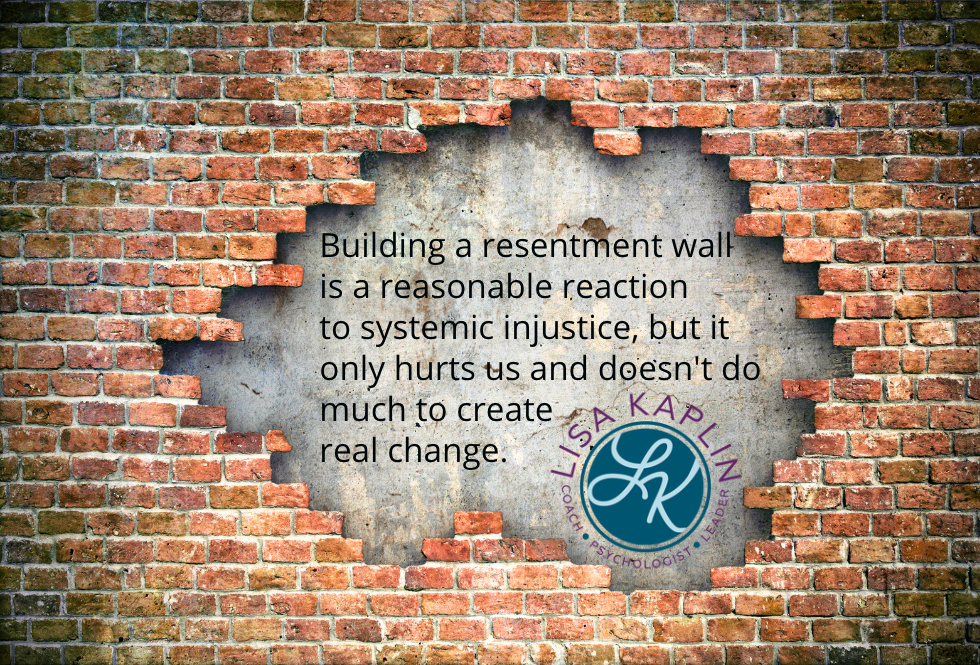One of my brilliant clients told me that sometimes she can’t get around her “resentment wall.” What’s a resentment wall? It is that space we build up when we are aware of life’s inequities; a partner that doesn’t do their fair share, a system that doesn’t really benefit us or even holds us back or a setting in which we aren’t valued as an equal and thus not treated as one. Who builds the resentment wall? We each do. We build it when we are in situations in which we have little control over what happens to us and how others show up for us. Bottom line, it sucks.
The resentment wall is 100% understandable and may even at times be a reasonable block to us really losing it. Who could blame women for being angry for still not making as much money as men or still not having a seat at the most important decision-making tables? Who could blame people of color for the chronic and constant racism and systemic settings that can still hold them back? Who could blame any of us for feeling resentment over situations, people, and systems that are not ultimately fair to us?
Yet, frustratingly enough, we each build our own wall. It might make sense that we build it and yet, who is it really hurting? Probably us. I’ve got a big ole 6-foot-thick resentment wall that I carry around with me like a badge of honor. Sometimes it’s fun to carry it because when others recognize it, we can bitch about it together. Sometimes, however, that resentment wall just exhausts me and sadly enough, doesn’t change the situation.
Building a resentment wall is a reasonable reaction to systemic injustice, but it only hurts us and doesn't do much to create real change. #resentment #injustice #racism #sexism #homophobia #socialchange Click To TweetSo, what do we do with these understandable, yet periodically exhausting, resentment walls? We have a few choices.
- Tolerate instead of resent. Not my favorite choice, but sometimes it might be a literal or figurative good choice.
- Fight like hell against whatever has led to us putting that wall up. Fight sexism, racism, homophobia, etc. This choice makes sense for some, but maybe not all, situations in that radical change tends to only happen when really brave people stand up and fight for what they want. Some examples include the Civil Rights Movement, the Me Too Movement, and so many others throughout history. Yet most of us don’t have it in us to fight constantly and therefore we may choose bursts of fighting and then times of rest. Does it knock down the resentment wall? Maybe. At least it’s action.
- Our final choice is to accept the reality of what is. Accept, not capitulate, the reality of a very inequitable world, accept all of our feelings around it, and then choose consciously how we will respond in order to remove the weight of our resentment wall. Maybe we choose to fight, maybe we choose to stand in our own power and relentlessly ask for what we want and what we deserve. Maybe we choose to try to change the system or maybe we choose to change our own personal relationships. Whatever we choose, we take the power of that resentment wall when we believe in our own ability to choose our responses.
Acceptance and choice doesn’t mean giving into a dysfunctional system. It means accepting the reality of what is and then choosing your own personal response to it. Why choose option #3? Because maybe that will help you release the weight of the resentment wall and allow you to stand in your own power and choose how you show up no matter what the system looks like. Who knows? Maybe each of us standing in our own power will ultimately change the system. Here’s to walking around (or over or through) that resentment wall into full ownership of ourselves, our rights, and our ability to change systems that don’t work for us.
Love,

Lisa Kaplin Psy. D. PCC

